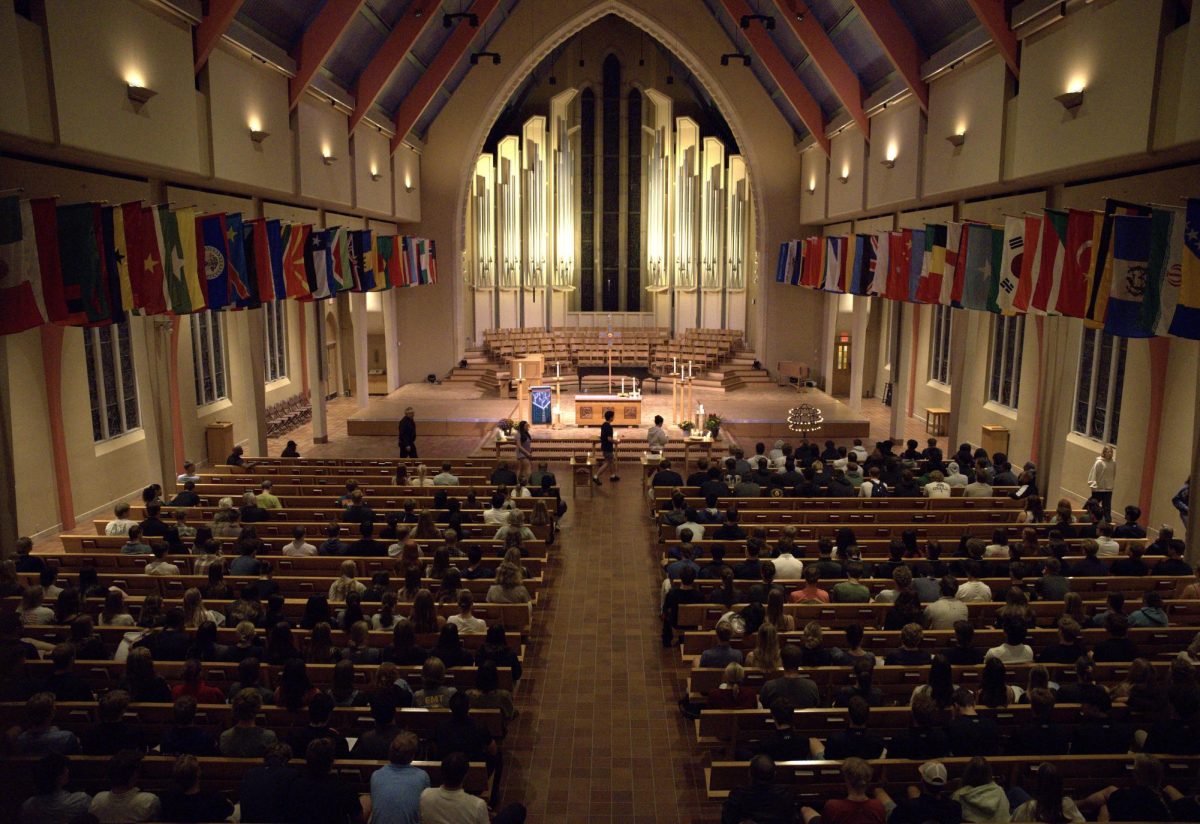St. Olaf College embarked on the Strategic Resource Allocation Project (SRAP) to contain costs, boost revenue and reallocate resources as needed. One of the chief drivers of slow revenue growth necessitating SRAP has been declining net tuition revenue due to increasing expenditures on financial aid. Spending has spiked due to the needs of an increasingly socio-economically diverse student body, as well as new efforts to decrease student indebtedness.
In response, the College has made a number of adjustments to its admissions policies in the hopes of increasing net tuition revenue. One such change is reducing the number of international students admitted to the college and producing classes between 785 and 800 students.
According to College Scorecard Data from the U.S. Department of Education (USDE), between 2007 and 2015, the number of poor and middle income students attending St. Olaf rose substantially, leading to an 84 percent increase in expenditures on need-based financial aid. The USDE data shows that the percentage of students with family incomes between $0 and $30,000 rose 27 percent, from 11.5 percent to 14.6 percent of students. The percentage with family incomes between $30,001 and $48,000 rose 44 percent, from 7 percent to 10.10 percent of students, and the number of first-generation students rose 29 percent, from 9.7 percent to 12.5 percent of students.
Another contributing factor to declining net tuition revenue has been new efforts to reduce student indebtedness.
Rising expenditures on financial aid have led to a steady decline in net tuition revenue over the years.
“In 2014, our net tuition revenue peaked at $66.8 million; in 2018 we’re projecting net tuition revenue of $58.7 million, or a 12 percent reduction in four years,” Hanson said.
Over the summer and fall of 2017, the Financial Aid Strategies Group worked with the College’s enrollment consultant to consider possible adjustments to the College’s aid policies to increase net tuition revenue while still meeting 100 percent of demonstrated financial need and reducing student indebtedness.
“In 2014, our net tuition revenue peaked at $66.8 million; in 2018 we’re projecting net tuition revenue of $58.7 million, or a 12 percent reduction in four years,” – Jan Hanson
“The group completed an analysis of past awarding policies for many of our peers, and worked with our enrollment consultant to create a model that increases net revenue, produces a first-year class of between 785 – 800 students, decreases the percentage of international students and sets a target for 21 percent of the class to be domestic students of color,” Hanson said in an email to faculty and staff.
According to Michael Kyle ’85, Vice President for Enrollment and College Relations, the College plans to reduce the percentage of international students in order to meet past enrollment targets that allow the College to budget properly.
“We had a target in place to enroll 65 international students this past fall, and ended up enrolling 92, or 27 over our target. International students receive scholarships, and we plan our budget for that in alignment with a target number of students,” Kyle said.
Beginning with the class of 2022, the College also plans to increase student work awards while limiting who qualifies. Kyle said this change was separate from the push to raise net tuition revenue and would not save money.
“The increase in student work award reflects the continuing wage increase mandated by state law and a desire to award only the number of work awards that can actually be achieved. As wages have increased, the number of hours required for students to earn their work award has decreased,” Kyle said. “We have not changed the maximum work award in students’ aid packages for at least 15 years while the student work wage has risen.”
Altogether, these changes are expected to raise $1 million that will be counted towards SRAP’s goal of raising $5-8 million.
“The financial aid policy adjustments, coupled with the momentum currently reflected in our enrollment numbers, give us confidence that we can generate an additional $1 million in first year student net revenue compared to the prior cycle,” Hanson said.


